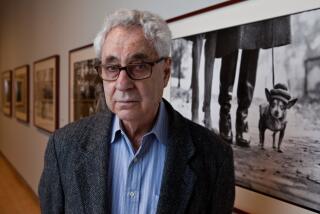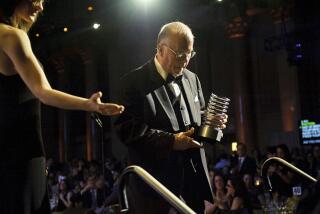Harold Edgerton, 86; Photo Pioneer
CAMBRIDGE, Mass. — Harold (Doc) Edgerton, whose development of the electronic flash showed humankind brilliant images of a world never before seen, died of a heart attack Thursday afternoon.
Edgerton, 86, whose work was familiar to millions through stop-action photographs of such images as the wings of a hummingbird in flight or of a bullet shattering a balloon, died while having lunch at the faculty club of the Massachusetts Institute of Technology. He was professor emeritus of electrical measurements at the school.
The achievements of Edgerton, a much loved professor dubbed “Papa Flash,” spanned much of the 20th Century.
As a boy he learned photography from an uncle but grew frustrated when his first roll of indoor pictures was underexposed. After receiving a degree in electrical engineering from the University of Nebraska he entered MIT, where he earned a doctorate in 1931.
It was while a graduate student that he built his first flash tube using vaporized mercury. He later turned to the xenon gas still in use today. (The concept itself dates to the 19th Century, and electric-spark photographs were done at the beginning of this century.)
Edgerton succeeded in making exposures of less than one microsecond’s duration. (A microsecond is one-millionth of a second.) And the process was repeatable.
Edgerton’s revolutionary work in the use of strobe lights captured images long hidden to the naked eye. His famous photographs of a drop of milk splashing on a table top and of a bullet shooting through apples and balloons showed the world what time looks like when it stands still.
Edgerton’s strobe work also led to underwater exploration. He helped search the Aegean Sea for the mythical city of Atlantis and surveyed Loch Ness in an attempt to solve the mystery of the Scottish monster. In 1973 he helped find the remains of the Civil War ironclad Monitor, which had sunk off Cape Hatteras, N.C.
His strobe lamps enabled the Allies to track enemy movements at night during World War II and were used to photograph the first atomic tests. He once photographed a football player kicking a ball, showing the ball compressed almost in half at the moment of impact.
In 1988, he was awarded a national medal of technology by then-President Reagan. Undersea explorer Jacques Cousteau used some of Edgerton’s sonar equipment, and the two collaborated in locating the British Army ship HMS Britannia, which was sunk by a mine off the Greek coast during World War I. Edgerton’s influence even penetrated to the depths of the Titanic. His underwater camera was used to photograph the shipwreck when it was discovered in 1986.
“If it comes, it comes,” Edgerton once said of his ideas and inventions. “It’ll come by inspiration and God almighty and hit you right in the middle of the night.”
Although officially retired from MIT in 1968, he continued to live in an apartment next to the campus and most days could still be found in his laboratory just off MIT’s “Strobe Alley,” where his work is displayed.
“I got stuck,” he once said of his long affiliation with the university. “But it’s given me a very nice place to work.”
In addition to his inventions, Edgerton and two former students started a company called EG&G; in 1947, specializing in electronic technology. Now a multimillion-dollar engineering concern, the company was under contract to the military and designed and operated systems that timed and fired U.S. nuclear bomb tests.
At a recent meeting of the Archaeological Society of America, Edgerton offered words of advice to a group gathered to honor his life’s achievements.
“Work like hell, tell everyone everything you know, close a deal with a handshake, and have fun,” Edgerton told the society’s members.
He is survived by his wife of 62 years, Esther, a daughter and a son.





